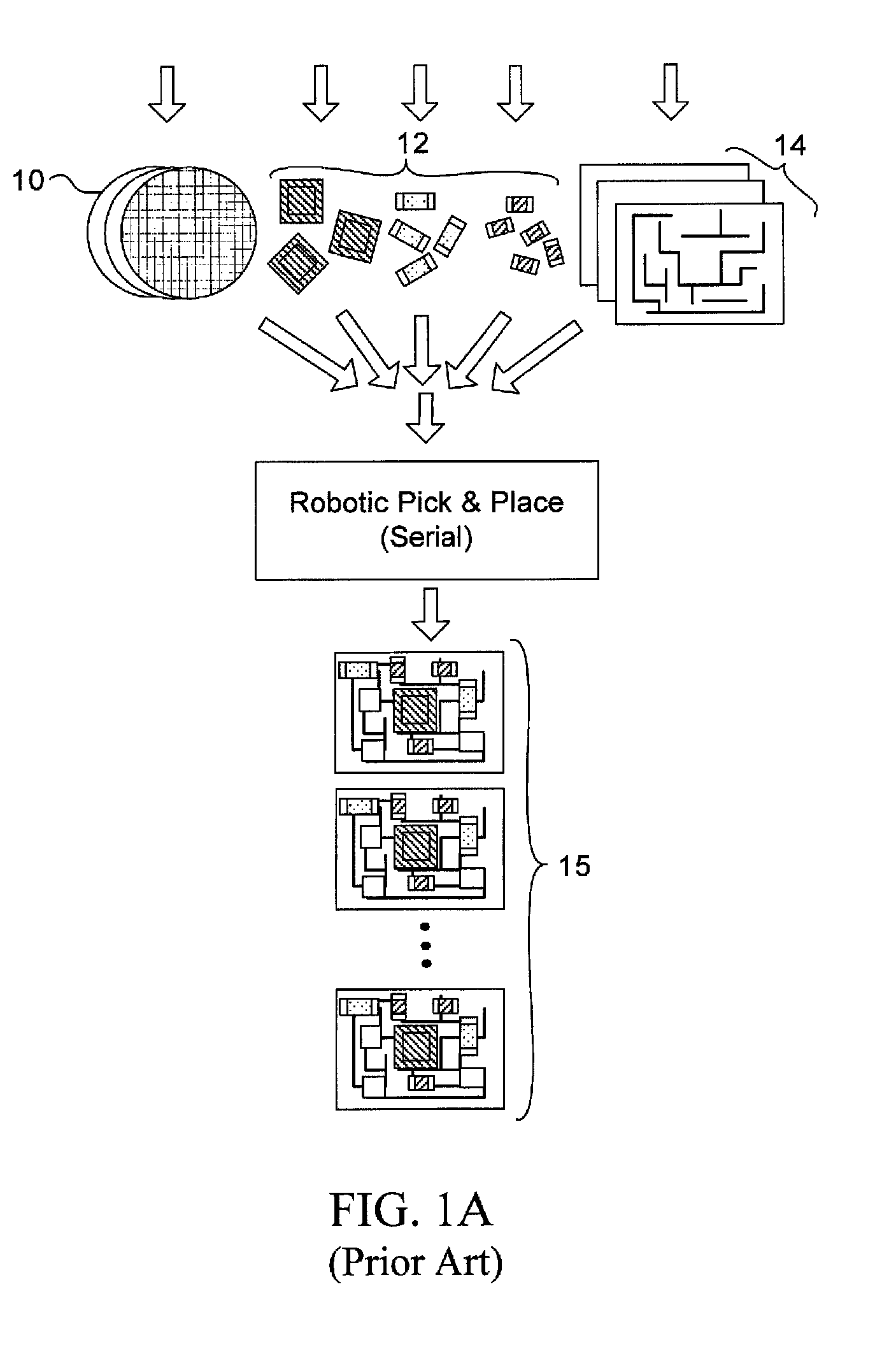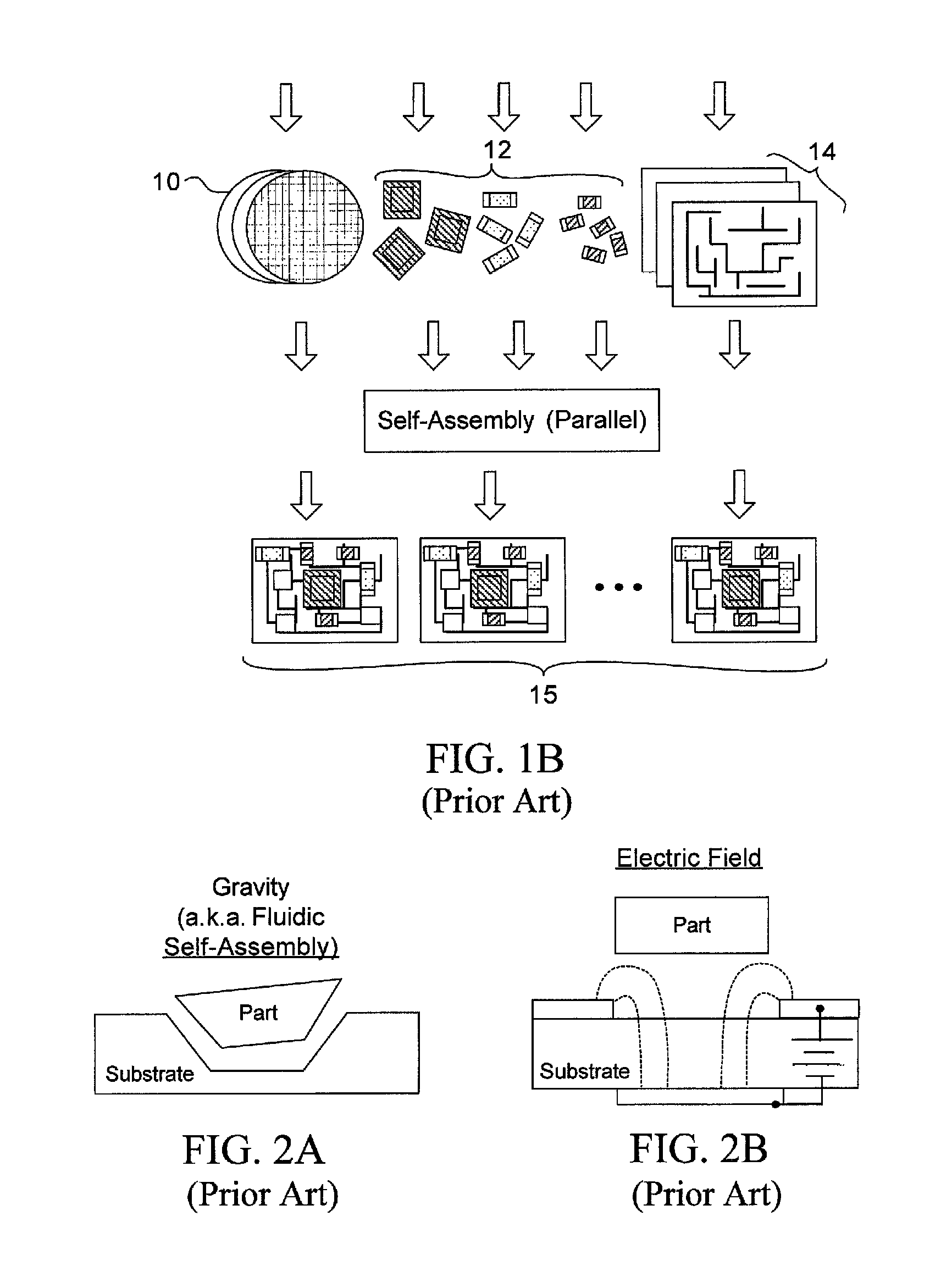Method and structure for magnetically-directed, self-assembly of three-dimensional structures
a three-dimensional structure and self-assembly technology, applied in the direction of magnetic bodies, final product manufacturing, sustainable manufacturing/processing, etc., can solve the problems of over-powering the throughput capability of serial back-end packaging and assembly, and the advancement of electronic and photonic devices for signal processing, wireless communication, computing and the lik
- Summary
- Abstract
- Description
- Claims
- Application Information
AI Technical Summary
Benefits of technology
Problems solved by technology
Method used
Image
Examples
Embodiment Construction
[0049]Reference is now made a specific embodiment, shown in FIG. 3, in which an assembly, generally indicated as 30, includes a first member 32, a second member 34 and a third member 36. First member 32 is a printed circuit board; the circuit having a generic flip chip circuit and capacitor by way of example mounted thereon. Circuit board 32 is provided with circuit structure including wiring or trace leads 38 conductively coupled to solder bumps 40 to allow electrical connection with other members 34, 36. Circuit board 32 (interchangeably referred to as first member 32) includes a first plurality of magnets 42 arranged in a pattern 44 to provide a shaped magnetic field. Circuit board 32 also includes a second plurality of magnets 46 arranged in a second pattern 48.
[0050]Second member 34, in this embodiment a flip chip, is formed with a plurality of magnets 50 thereon and solder bumps 52. Magnets 50 are provided in a predetermined pattern 54, which is the mirror image of pattern 44 ...
PUM
| Property | Measurement | Unit |
|---|---|---|
| thickness | aaaaa | aaaaa |
| thickness | aaaaa | aaaaa |
| thickness | aaaaa | aaaaa |
Abstract
Description
Claims
Application Information
 Login to View More
Login to View More - R&D
- Intellectual Property
- Life Sciences
- Materials
- Tech Scout
- Unparalleled Data Quality
- Higher Quality Content
- 60% Fewer Hallucinations
Browse by: Latest US Patents, China's latest patents, Technical Efficacy Thesaurus, Application Domain, Technology Topic, Popular Technical Reports.
© 2025 PatSnap. All rights reserved.Legal|Privacy policy|Modern Slavery Act Transparency Statement|Sitemap|About US| Contact US: help@patsnap.com



